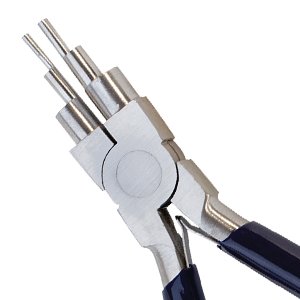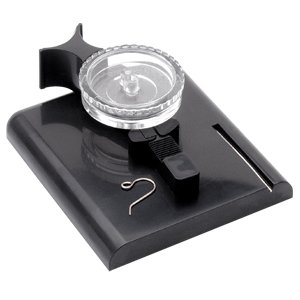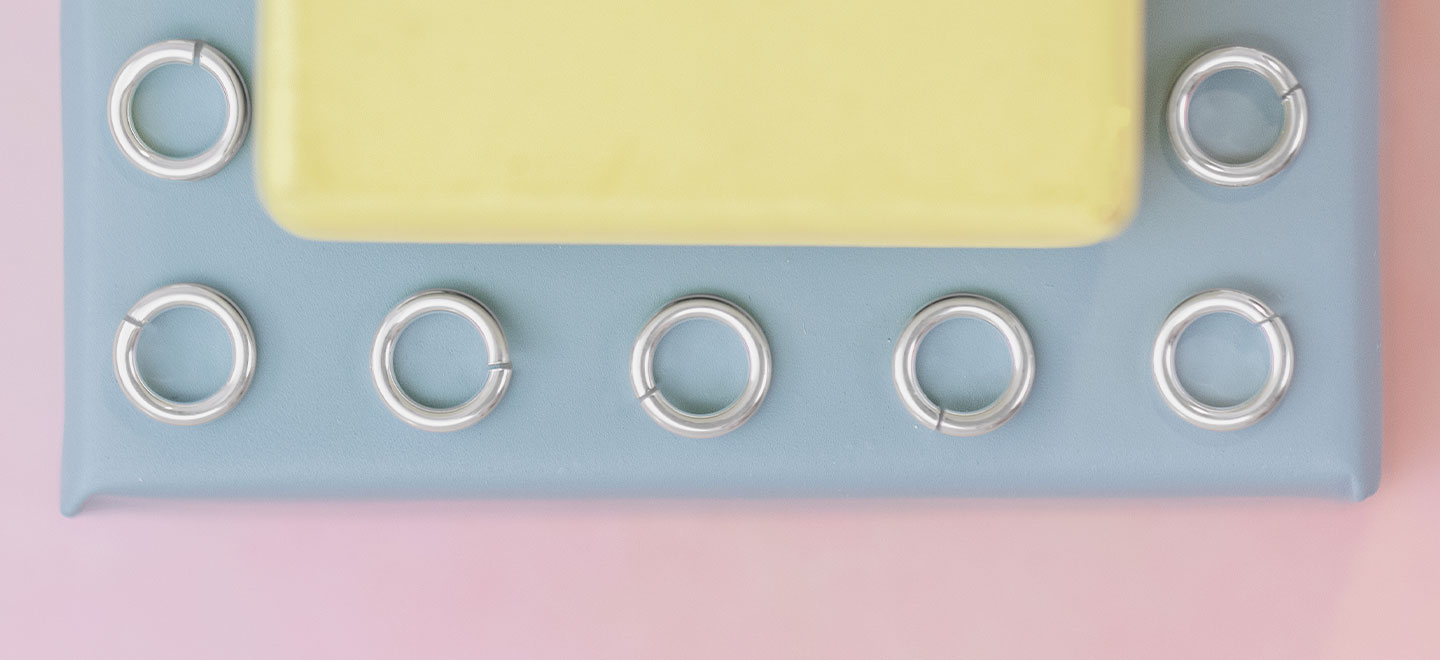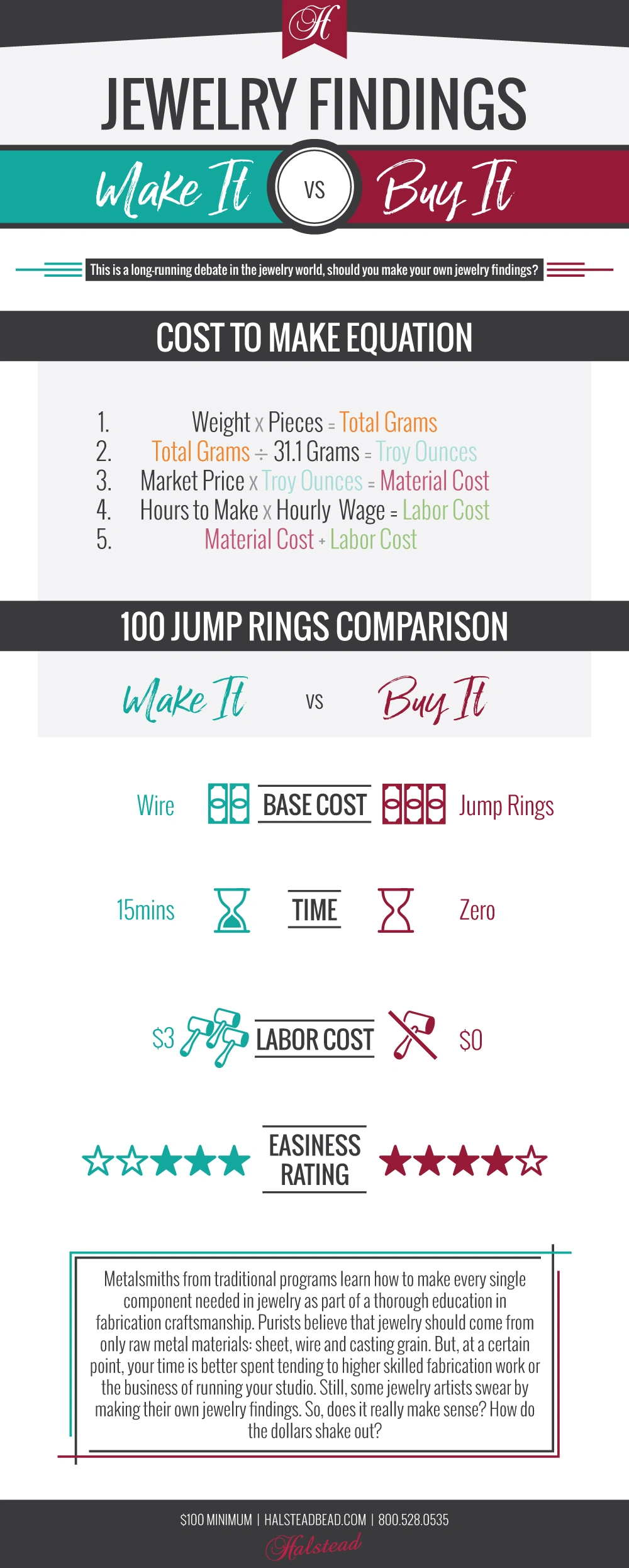This is a long-running debate in the jewelry world, should you make your own jewelry findings? Metalsmiths from traditional programs learn how to make every single component needed in jewelry as part of a thorough education in fabrication craftsmanship. Purists believe that jewelry should come from only raw metal materials. But make sure that making each individual component is actually the right move for your business.
There is a long-running debate in the jewelry world, should you make your own jewelry findings? Metalsmiths from traditional programs learn how to make every single component needed in jewelry as part of a thorough education in fabrication craftsmanship. Purists believe that jewelry should come from only raw metal materials: sheet, wire and casting grain. But, at a certain point, your time is better spent tending to higher-skilled fabrication work or the business of running your studio. Still, some jewelry artists swear by making their own jewelry findings. So, does it really make sense? How do the dollars shake out?
We took the guesswork out of this discussion by running the numbers. The answer? - Yes and no. It saves you money to make your own parts if you look strictly at material cost vs. prefabricated findings cost; but, the time and energy put into creating piles of basic findings may not necessarily be the right choice when you look at your business expenses overall. Labor cost is a critical consideration. This debate really comes down to how much value you put on your time or the time of an apprentice. We will share some additional thoughts in the sections below.
Both of the calculation examples shown here are based on the following figures:
- 31.1 grams = 1 troy ounce
- Silver market basis $15.41 per troy ounce (updated for market trends March 2019)
- Sterling round wire price at that market is $21.54 per troy ounce
Making Your Own Jump Rings Comparison

Our SJ95 jump ring is a 5mm, 19 gauge open ring that weighs .1069 grams per piece. Making your own jump rings can be done by tightly coiling wire around a jump ring mandrel or looping pliers, then removing the coil, and finally, carefully sawing a cut down the entire length without deforming the round rings.
It takes .23 ounces of 20ga wire to make 100 jump rings.
100pcs of SJ85A jump rings cost $13.90 at wholesale
Savings = $4.42 or $0.044 per jump ring for material before accounting for labor
Making Your Own Earwire Comparison

Our most popular round wire, plain silver ear wire finding SF43827 is a style that is easy to make with an earwire jig, mandrel, or a dowel rod and round nose pliers. It is made from 21 gauge wire and weighs .17g per piece.
It takes .55 ounces of 21ga wire to make 100 pcs of SF43827 costing about $22.67
100 pcs of SF43827 cost $37.40
Savings = $14.73 or $0.147 per earwire
This is a greater savings, but earwires are more time-consuming findings to make. Think about the time it would take you to make 100 pieces of an earwire. If you can measure, cut and shape one piece every 30 seconds that would still take nearly an hour. Is your labor time worth more than $14.73 per hour? Again, consider the additional filing and tumbling time to temper the wires and remove burrs. That one hour is time you could be using for custom work, marketing, or fabrication work at a higher skill level.
The Bottom Line
If you are using small quantities of jewelry findings and you have plenty of time to spare it will save you some money to make your own jewelry findings such as jump rings and earwires. However, most designers prefer to use their time for the creative process of designing jewelry. Taking hours out of your day for the menial tasks of making your own jewelry findings is far less rewarding and rarely saves enough money to justify the time.
Moreover, think about what those savings mean to your costing and pricing. Saving 30 cents per pair of earrings is not going to have a large impact on what you can charge for your earrings or your profit margin. Ditto on the 4 cents per jump ring. The more compelling way to think about it is that you could probably make more pairs of earrings that would earn you revenue with the time you would spend making findings. Which is greater, the potential earnings or the savings on buying findings?
Also, consider the reality of sitting down for an hour to make these things. The novelty can be fun at first but if you are making any quantity of jewelry it will get old really fast. So, ignore the ghostly voice of your metals studio 101 professor in your head and let it go. I have to remind myself of the same thing when I have ripening bananas in my kitchen. I hear my mother telling me to stay up until midnight to make banana bread instead of throwing away $0.95 worth of bananas and wasting food, but I'm learning to let that one go too.
Some will argue that using machine-made components would somehow detract from the craftsmanship of work that is otherwise entirely handmade. What about the hand of the maker? Indeed, that is an issue to consider in your designs. I would counter that using manufactured basics for the less prominent features in a piece does not detract from the artistic quality of the design and craftsmanship. The use of components exists on a broad spectrum ranging from minimal inclusion of minor parts to designs that are entirely assembled. Where you are comfortable is ultimately up to you.
P.S. I love you, mom. And the banana bread would be delicious...
About Halstead
Halstead is one of North America's leading distributors of jewelry supplies. The firm is celebrating its 46th anniversary this year. Halstead specializes in wholesale findings, chain, and metals for jewelry artists.
Other Halstead articles you may be interested in:
Tips To Save Money Buying Bulk Jewelry Wire
10 Cash Flow Culprits In Your Jewelry Business
Got questions? Email our studio coordinator Sylvie at [email protected]. We'd love to hear from you. Sorry, studio support is not available by phone. Emails only, please.
Comments
"I like making my own findings because I can create the exact size (jump rings) and style (ear wires) for the piece I'm working on. I have seen customers look at beautifully handcrafted earrings with manufactured ear wires and decide not to buy. Chains and neck wires - definitely pre-made." - Tracy
"While I agree to a certain extent re: jump rings, if one enjoys making ear wires that are unique and lend to the overall aesthetic of a piece they will not find those in a premade earring bag. Also, some of us enjoy using thicker wire and/or decorative wire. As some added food for thought, a freezer bag and a few moments peeling those bananas/breaking them into sections will let you pop them in the freezer to preserve them for impromptu smoothies or banana bread at your convenience." - Maria
"Peel & freeze your overripe bananas until you have time to make banana bread. hahaha. Seriously though, If I want to use a unique finding I make it myself, but if it's something that's common, it's usually best practice to just purchase them in bulk. I value my time too much to be sitting there and making hundreds of the same common pieces." - D. S.
"Hilary - toss the whole bananas into the freezer until you have time to make the banana bread. They will keep for months in their peels! Just set them out to thaw on a pan with a rim. They make better banana bread this way than any other (wink wink). I think I get about 3 nanners to a cup. Yes, they are slimy and wet and that's fine! And I totally agree with the jump rings! Earwires, I like my length and 21 gauge, so I'll keep doing them." - Amy P.






